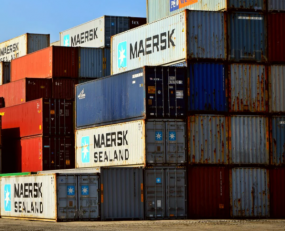
The US economy is growing, and this is driving demand in both the US and global logistics sectors. Although the congestion seen around port complexes such as Los Angeles and Long Beach is moderating, the market friction seems to be shifting into other areas of the economy. For example, there are a number of reports of increasing road freight labour costs as large trucking companies expand their fleets and their drivers demand higher wages.
The European economies are on a different trajectory. The volume and timing of demand are different, and the patterns of demand markets seem more traditional. Recovery in the European – although probably not the UK – economy is slower, described by the Berlin-based DIW (Deutsches Institut für Wirtschaftsforschung) as “the USA and China leading the way, Europe lagging behind”. Specifically, Germany is seeing a delayed recovery, with the Munich based IFO observing that “further easing is not expected until the middle of the second quarter, with restrictions probably lifted by the end of the third quarter. We expect a vigorous expansion of economic activities as the measures are gradually lifted over the course of the six months through the summer, especially in the services sector that was particularly affected by the pandemic,”. This is probably an accurate description for most of continental Europe.
The demand picture for logistics reflects this. For example, congestion around the Port of Hamburg is significant with HHLA and Eurogate reporting delays of two weeks for vessels seeking to dock, whilst trucks are rationed to container deliveries 48 hours prior to sailing. Rail services are operating normally. However, the contrast with the US West Coast ports is that demand is being driven by exports, not imports. This divergence is less extreme in Rotterdam and Antwerp, but the key point is that the demand driver of the world’s economy in general and logistics, in particular, remains the US.
A further point is that e-retail accounts for a major element of US demand, with growth in imported consumer durables being proportionately higher than prior to 2020 as internet retailing drives higher levels of retail sourcing at a global level. It is unlikely that this will be seen in most but not all European economies, simply because e-retail is less developed.
Although a lot has changed over the past year, one thing that has not is the role that the US plays in driving the global economy. This is still the key driver for the demand side of logistics markets, at least at the global level.
Source: Transport Intelligence, April 20, 2021
Author: Thomas Cullen